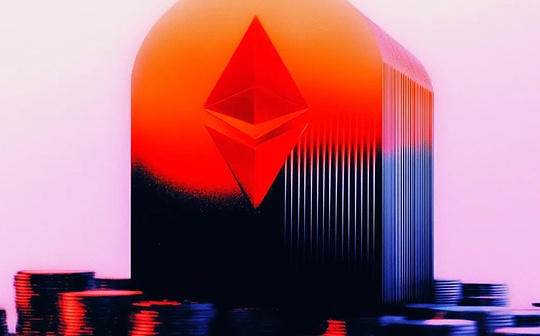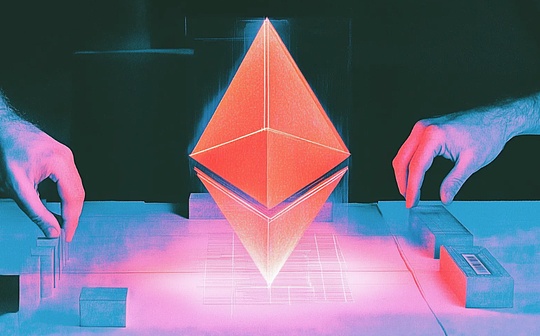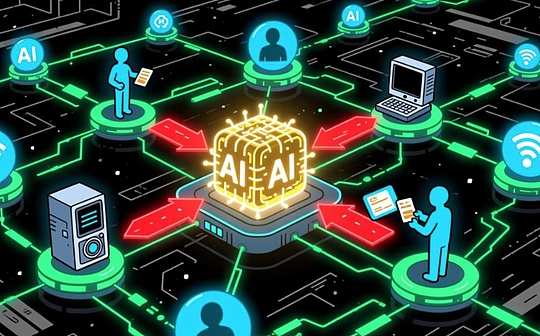
Author: David C, Bankless; Compilation: AIMan@Bitchain Vision
Ethereum continues to develop steadily behind the scenes.Amid the ongoing debate about the “right” roadmap for computers in the world, developers have been steadily moving forward, steadily preparing for two major upgrades: Pectra (planned for May 2025) and Fusaka (planned for late 2025).
Each technology has its own nuances, such as increasing validator efficiency, increasing data capacity of 2 layers of Rollup, and improving wallet functionality – all to make Ethereum more scalable and accessible.
In this article, we will detail these two upgrades, giving you an in-depth look at how these upgrades fit into Ethereum’s broader efforts to stay ahead of user needs, stay secure and build a more user-friendly network.让我们深入了解吧!
What does Pectra bring to Ethereum
After several delays and testnet accidents, Pectra is now scheduled to be launched on the main network around May 2025.Bringing improvements to staking, blob and account abstractions.Here are its core upgrades:
Staking and Verifier Upgrade
Since Ethereum introduced validator withdrawals during Shapella, the biggest code changes may be achieved through an upgrade commonly known as “MaxEB”.
Under current rules, each verifier can only receive a staking reward of 32 ETH (MaxEB maximum effective balance), which means that large staking providers like Lido or Coinbase will launch multiple validator nodes to stake more than 32 ETH.While large validator sets sound favorable for decentralization, it may be more superficial because they usually all operate under one umbrella, and it also slows down the network and increases overhead for everyone.
Pectra will increase MaxEB from 32 ETH to 2048 ETHTo change this situation, this is a major leap proposed by EIP-7251.As a result, large-scale stakeholders and operators can integrate their existing validators, freeing up bandwidth across the entire network to make it run smoother.At the same time, it will not affect the minimum required to run the validator, and it is still 32 ETH, but now individual pledgeers can also stake more, and their pledge rewards will automatically increase.
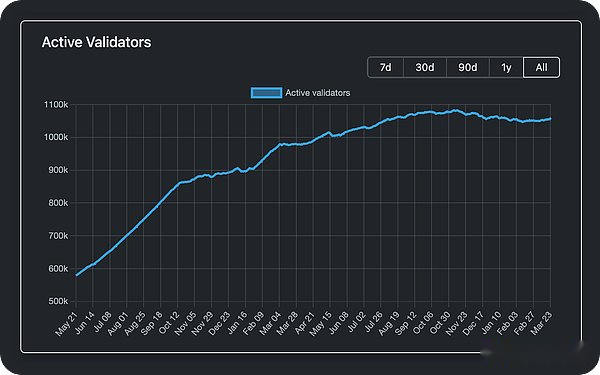
https://www.validatorqueue.com/
While this sounds central, remember that it also adds punishment for bad behavior.For example, the reduction penalty (the amount forfeited when a validator acts maliciously) is proportional to the amount of ETH they hold.If problems arise, any validator with 2,048 ETH will face extremely high initial cut penalties.
Blob data capacity increases
In terms of scalability, Pectra is built on the Dencun hard fork (EIP-4844).The Dencun fork introduces “blobs” as a cheaper way to publish data on Ethereum by L2.
But as on-chain usage increases, blob fees continue to rise as they continue to exceed the target amount per block.Pectra increases the minimum blob capacity from 3 to 6 and the maximum average blob for each block from 6 to 9(via EIP-7691) to resolve this issue.In other words, it increases current capacity, so L2 can keep the fees low and continue to use Ethereum as its home.
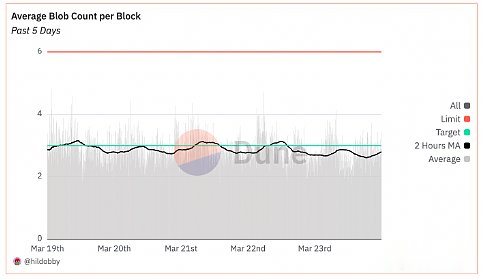
Source: Dune @hildobby
This seems to be just the beginning,Vitalik says his ideal goal is to reach 48/72 blob capacity, this is a huge leap, but given the relatively modest growth expected by Pectra, this may be a bit far away.The entire debate remains one of the most controversial topics in the Ethereum community, with researchers and ETH holders disagreeing on whether to prioritize support for ordinary L2 users or retain the economic value of ETH, with some viewing the blob space being weakened.
It’s a delicate balancing act that forces Ethereum to make tough decisions about whom it will be optimized for.Time will tell us which tradeoffs will lead to a stronger long-term future.
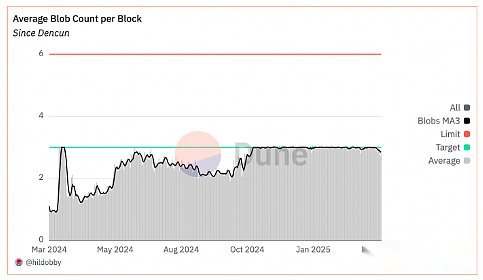
Source: Dune @hildobby
Add an account abstraction
A long-standing buzzword for Ethereum is account abstraction: letting regular wallets add “smart” features such as social recovery or automatic approval of transactions.
What is the final result?It is more convenient for users’ wallets, without complicated setup and security steps.EIP-7702 in Pectra improves the original EIP-4337 for account abstraction, which will allow advanced authentication methods such as standard Ethereum address bundling transactions, sponsoring gas fees and using keys.Users can also set spending limits, or use social recovery to regain control when keys are lost.In short, there are fewer popups, less hassle, a smoother overall experience, more novice-friendly, while allowing OG to make more personalized settings.
Ethereum Fusaka upgrade
Once Pectra is over, people’s attention will turn to the next upgrade – Fusaka.Vitalik hopes to upgrade on the test network immediately after Pectra is launched.The current goal is to end 2025.While this may change, the upgrade scope may remain the same, mainly centering on several core updates:
By 2025, we need to use PeerDAS’s Fusaka on L1, ideally blob target/limit 48/72
Our goal is to run the Fusaka testnet with these blob parameters the day after Pectra went live.
— vitalik.eth (@VitalikButerin) March 1, 2025
Pure Data Availability Sampling (PeerDAS)
One of Fusaka’s main goals is to leverage PeerDAS to improve data availability.Currently, every Ethereum node must download all the data in each block, which not only slows down the speed, but also raises the threshold for running nodes.
PeerDAS subverts this pattern—only a small portion of data is downloaded per node and uses encryption checks to confirm that the full dataset remains.Imagine a group of people at a concert, each recording a clip of the show; no one has the entire video, but they can prove together that the whole incident happened.
The PeerDAS model reduces the amount of data that nodes need to store and share, making the node’s work easier, which helps Ethereum handle more activities.But there is a problem: the validator still needs to check certain data to make sure everything works smoothly.Currently, the system that provides this data depends on how many validators are active, and if this number changes very quickly—if a group of validators leave or merge—can cause problems.Rest assured though: Since PeerDAS is a top priority before other upgrades, it is already under test, and Ethereum core developers have been told to prioritize it before making other upgrades.If successful, it will improve Ethereum’s scalability, make running nodes easier, and keep the network decentralized while usage increases.
Ethereum Object Format (EOF)
Another core feature of Fusaka is a complete remodel of the Ethereum Virtual Machine (EVM) through a feature called the Ethereum Object Format (EOF).
This upgrade improves security and makes the entire system more orderly by clearly separating the contract code from the data, thus modernizing the structure of smart contracts.
As the largest developer environment, solidifying EVM through EOF will greatly help make smart contracts easier and safer to write, helping developers avoid common mistakes and vulnerabilities.In addition, through the core structure of Ethereum contracts, EOF lays the foundation for faster and more reliable development in the future.
Minimalist approach
Overall, Fusaka’s design adheres to the concept of “less is more”.Developers hope to focus the upgrade on several key changes—namely PeerDAS and EOF—that allows for faster testing and release without introducing too much complexity at once.
Still, some other proposals are under consideration.One of them is EIP-7688, which is based on an early upgrade (EIP-4788), allowing smart contracts to check important network information (such as who the current verifier is or what the latest block is) so that they can make decisions based on it.
If the team decides to focus on PeerDAS first, EIP-7688 may be postponed to a later upgrade.But for now, Fusaka is still interested in keeping it streamlining, focusing on the most important changes.
The development of Ethereum is still continuing.While it may seem that it may be slow and has delays, the value on which its stability depends (billions of dollars to be precise) means that extensive testing must be a priority rather than a luxury.
Therefore, Pectra and Fusaka will continue to hold this position and be tested as necessary to ensure they do achieve their goals.
Additionally, while layer 1 execution extensions are still an ongoing priority, it is not the direct main focus of these upcoming upgrades that focus more on extending layer 2 capabilities and improving network accessibility for users and developers.However, the test of extending layer 1 by adding block limits is already in progress!
Overall, between Pectra and Fusaka, Ethereum is expected to significantly expand its foundation, making life for L2 and its users easier while cementing its core with MaxEB and Ethereum object formats.Together, these upgrades make blockchain a secure and scalable network that is equally welcome for beginners and veterans.

